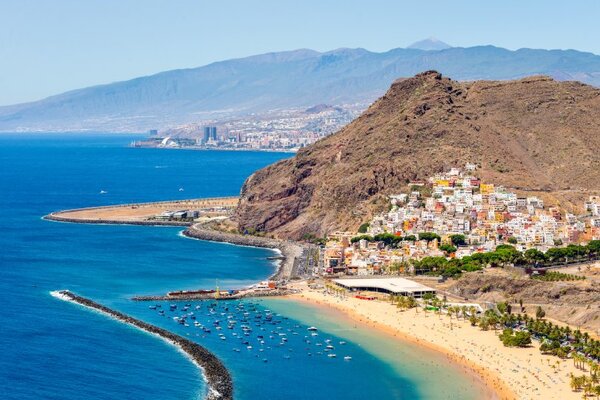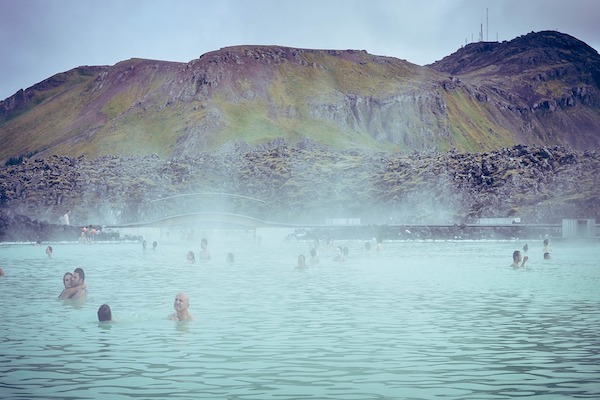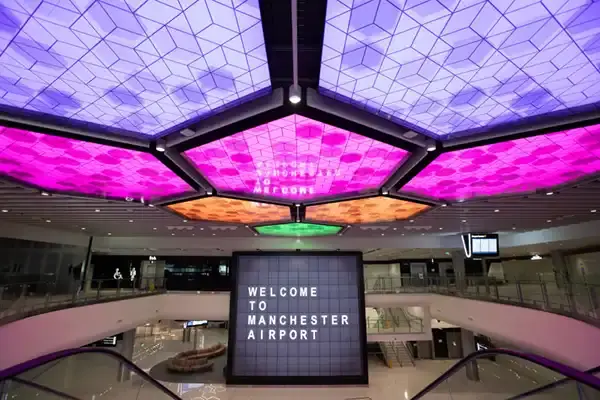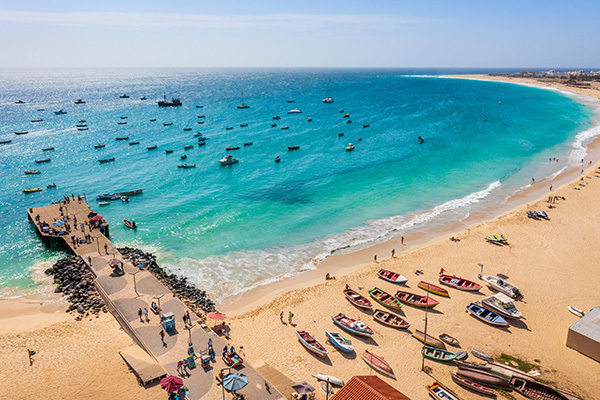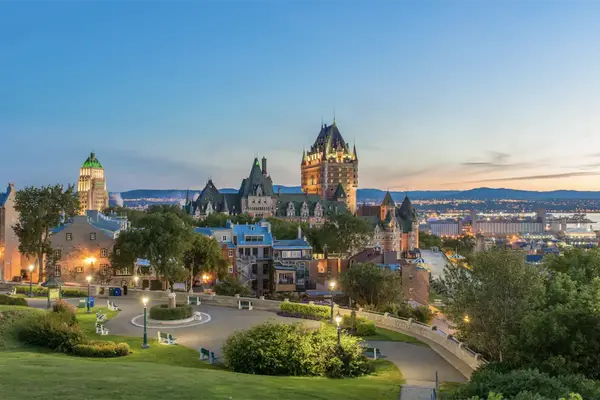Why the Polish city of Gdansk should be on your radar
It’s less than two-and-a-half hours from the UK but the Polish city of Gdansk isn’t well known to Brits. Sarah Holt highlights why it’s well worth a visit and looks at a new project that makes a city break there even more enticing
Surprise me,” I say to the barman at Flisak ’76, the underground speakeasy-style cocktail bar I discovered around the corner from my hotel, shortly after landing in Gdansk on an evening flight.
He disappears for a second and returns with what looks like a tube of toothpaste. He’s certainly met my brief. Next, he informs me that it’s a cocktail in gel form and to enjoy it I simply have to squeeze it into my mouth.
“Too much of a surprise?” he asks. “Maybe,” I reply sheepishly.
He takes the tube away and returns with a wooden artist’s palette, which allows me to paint with, as well as sip, my cocktail.
My “drinks”, and many others like them on the menu, come from the imaginations of a small but hyper-creative team of bar staff who reimagine the Flisak ’76 drinks menu Willy Wonka-style every month.
The beverages are one-of-a-kinds, specific to Gdansk, and they sum up the independent and individual spirit that makes the city such a compelling place to visit. Located on the north coast of Poland, the port city of Gdansk flies under the radar of many British tourists. In fact, only 13.1% of its visitors hail from the UK.
Yet, there are direct flights to the city from 11 UK airports including London Luton, Stansted, Manchester, Edinburgh and Bristol with airlines such as Ryanair and Wizz Air. The journey time is no more than two hours and 20 minutes, depending on which airport clients fly from. Plus, the city centre is only a 25-minute taxi drive from the runway. All of these factors combine to make it an ideal destination for a long-weekend city break.
Place in history
“Granary Island is very important to us. As it’s based in the heart of the Old Town it will bring a completely new touristic area to the city,”
Gdansk Tourism Organisation’s Michal Brandt
The holiday brochures may be light on mentions of Gdansk, but the history books certainly aren’t.
The city is famous for being the birthplace of the Solidarity Movement, which is considered to have been one of the key contributors to the fall of communism in Europe.
It also takes its place in the history books as the city formerly known as Danzig and the place where the first shots of the Second World War were fired, knocking Europe off its peaceful axis for six bloody years.
If your clients ask you what there is to do in Gdansk, it’s the museums dedicated to these two world-changing events that you’ll most likely want to tell them about first. Although the stuffy-sounding word “museum” isn’t enough to do these two sights justice.
Located just 10 minutes apart, both the European Solidarity Centre and The Museum of WWII are huge attractions.
For a ticket price of just 20 Polish zloty (about £4), I spend an entire morning at the former and I would have spent longer had my feet not started throbbing. There are five sprawling floors here, crammed with 2,000 interactive and multimedia exhibits. I’m most moved by a single leather jacket in a glass display case that’s torn with bullet holes and once belonged to Ludwik Piernicki who lost his life, at just 20 years old, in the name of solidarity.
I spend a further morning at the latter. Opened in 2017, the Museum of WWII features 18 cavernous rooms packed with information about the war, which began with Germany’s attack on The Polish Military Transport Depot on the Westerplatte peninsula in Gdansk in 1939.
I’m surrounded by young people during my visits to both of these world-class sights. They’re full of exhibits designed to engage children of all ages – ideal for clients to visit as part of a family break.
Local attractions
Badly damaged during the Second World War, Gdansk’s Old Town has been painstakingly rebuilt and restored, and is now a canvas of cobbles, gables, and fresco-fronted buildings painted in primary colours. With a look of Copenhagen about it, this is the best place for clients to base themselves during a trip.
I lose a day just mooching about.
I start my meander at the Upland Gate on the far west side of the Old Town and follow what’s known as The Royal Way to the Green Gate on the east side, where the Motlawa river shears its way through the city.
It’s the path the King of Poland used to take during his visits to the city and takes in sights such as Neptune’s Fountain, the Fahrenheit monument, and the prison tower and torture chambers.
I punctuate my wandering with pit stops at the city’s independent cafes and restaurants. I try plump parcels of Polish pierogi dumplings stuffed with meat and cheese and take the “when in Rome approach” to sampling the city’s own firewater Goldwasser vodka at the official Goldwasser restaurant. It makes my eyes water.
Growing popularity
From this spring there’ll be even more of a reason to recommend Gdansk to your clients, as the first stages of developments on Granary Island open to the public.
Splitting the Motlawa river like a tuning fork, Granary Island played a major role in the city’s maritime trade for centuries. In its heyday it was home to more than 300 granaries, capable of storing 250,000 tons of grain. The Second World War saw the island all but destroyed and it lay largely unused until major renovation plans were drawn up a few years ago.
Between the end of March and the start of April, the first new hotel and a foodie attraction will open on the island.
“Granary Island is very important to us, and we are more than happy to see it grow and change,” explains Gdansk Tourism Organisation’s Michal Brandt. “As it’s based in the heart of the Old Town it will bring a completely new touristic area to the city.”
The new hotel, the Radisson Hotel & Suites, will feature 350 rooms, including family options, a bar, all-day restaurant, gym, spa and swimming pool. It will be the first Radisson Hotel & Suites in central and Eastern Europe. The foodie attraction, meanwhile, is called Slony Spichlerz and will take the form of a food hall, inspired by those found in the likes of Lisbon and Montreal.
“The main idea of Slony Spichlerz is to create a gastronomic heart for the local community and tourists who want to relish the tastes of Gdansk,” explains spokesperson Lena Dul. “It will be the first in the region to combine many restaurateurs offering their own signature cuisines under one roof. There will be a huge diversity of flavours, from Polish to Asian and fusion to vegan.”
In the coming months, the Radisson’s 350 rooms will only be added to as more hotels and amenities open on Granary Island, including a new Holiday Inn.
“We expect there to be between 500 and 600 new rooms on Granary Island,” says Brandt. “It’s important because Gdansk is becoming more and more popular with tourists.”
The big coup for travel agents will be to get their clients to Gdansk before the rest of the UK wises up to everything it has to offer.
Book it: Kirker Holidays offers a three-night break in Gdansk in spring from £598pp.
- kirkerholidays.com
Beds to book
- Hampton by Hilton Old Town: Located inside a converted cinema, this modern hotel is a five-minute walk from Neptune’s Fountain and the pulse of the Old Town. Film posters and vintage cinema chairs are all part of the decor here.
- Hilton Hotel: Overlooking Granary Island, the Hilton Hotel is smart and modern. The jewel in its crown is the panoramic bar on the top floor that’s the highest in the Old Town.
- Radisson Hotels & Suites: Hotels don’t get much more central than this. You can see Neptune’s Fountain from the entrance. In warmer months clients can sip drinks and eat on the terrace that fronts the hotel.



